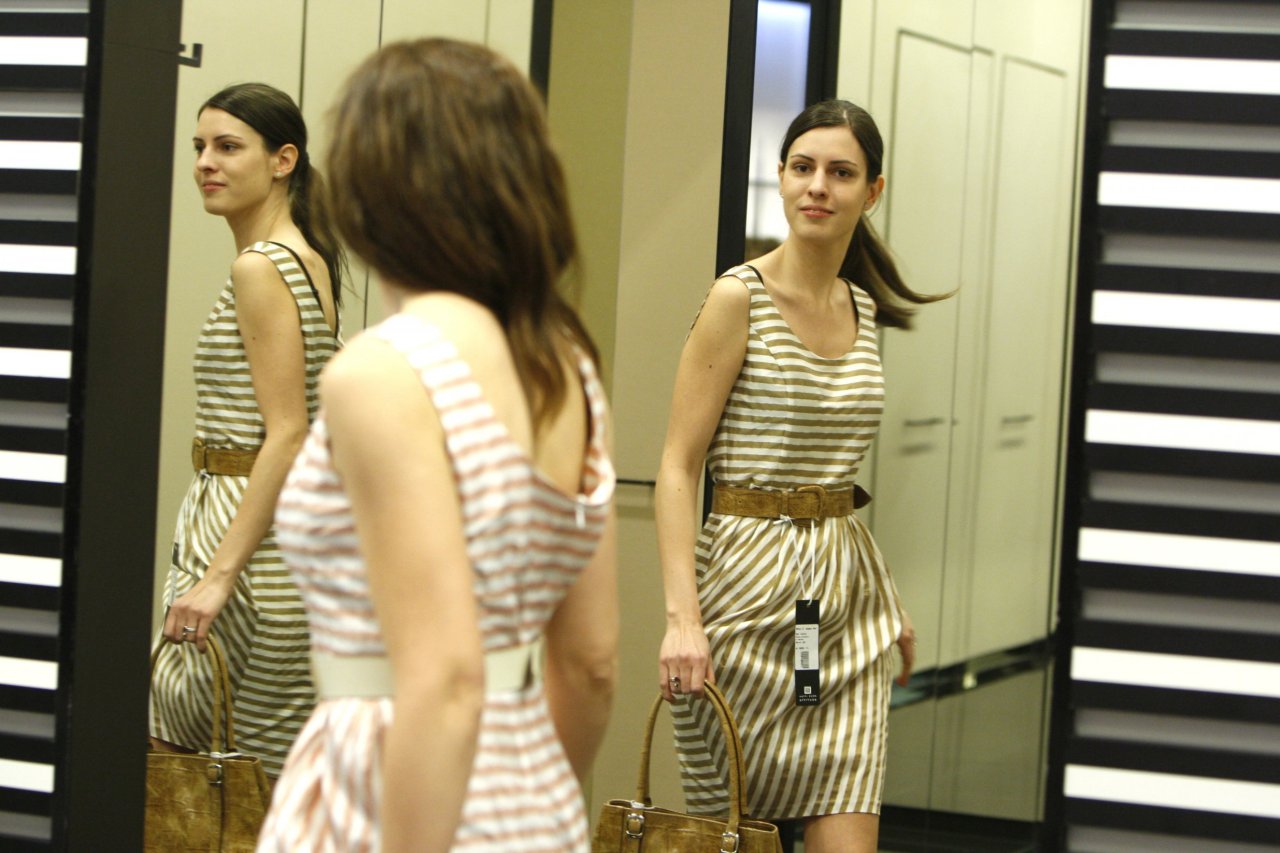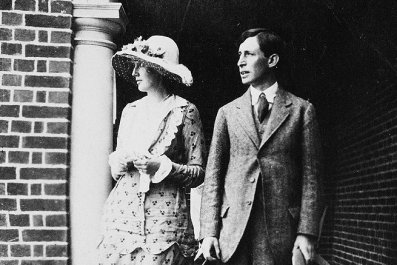The shoes I bought online don't fit. I ordered them in "my size," obviously, but that rarely means anything because all makers of shoes and clothes have their own ideas about sizing—which makes as much sense as allowing all the musicians in an orchestra to invent their own scales.
The lack of standard apparel sizes is a bigger problem than you might expect. Beyond just annoying the shit out of every person who's ever bought clothes or shoes, it's fantastically wasteful and a serious drag on the global spread of online commerce. And yet the apparel and retail industries won't fix it. In fact, they're actively making it worse.
But now we're getting the first glimpses of how data can tame sizing entropy. Data-driven systems are beginning to learn enough about you and the apparel you see online to make an accurate match. Such a system could tell whether those skinny jeans on Zara.com will fit well, or if you'll have to paint some Mazola on your legs just to get them on.
Any improvement here will be a big deal. The industry believes that about 40 percent of all apparel bought online is returned, and about 60 percent of those returns cite a problem with fit. Think of the impact up and down the line—the postage costs, the time consumers spend repacking and shipping items, the labor costs for retailers to handle the returns. How much extra pollution and traffic is generated by all those unnecessary rolls of delivery trucks and flights of cargo planes? The biggest beneficiaries of wacky sizing are UPS and Federal Express. Short their stocks if the problem gets solved.
Only about 7 percent of the clothing bought in the U.S. is purchased online. More than 60 percent of books are bought online. Why such a gap? A big slice of the population feels compelled to walk into a retail store to try on clothes and shoes. That's mostly because we lack confidence about fit—and style, too. We can't tell whether an item offered online will look good on us.
Now, you'd think a simple way to straighten out all of this would be for the world's apparel manufacturers to agree on the precise dimensions of a size 6 dress or size 11 shoes. But history says: That ain't gonna happen. Before the 1920s, size didn't matter. Most apparel was hand-tailored at home or in local shops. Railroads and assembly-line manufacturing opened up the market for ready-to-wear clothes made in factories and shipped to stores. That created a need for standard sizes, but no standard existed. So every apparel maker made up its own.
Over the past 80 years, the U.S. government twice tried to institute standard sizes by measuring thousands of people and drawing conclusions about typical measurements. Each was a doomed approach to data, measuring the wrong people or the wrong body parts. (As if Air Force women had the average American shape.) Anyway, apparel companies increasingly used size as a competitive strategy. Calvin Klein wanted to lure a differently shaped shopper from the Gap, so Calvin stitched his jeans to hug Brooke Shields's backside while the Gap produced the same-size jeans in proportions more suitable to a suburban soccer mom. Meanwhile, Americans ate Triple Whoppers and Cherry Garcia and got thicker, which led to vanity sizing—inflating sizes so that a 2015 size 6 dress would've been a 1960s size 12. Now more than ever, sizing is part of an apparel company's brand identity. If anything, brands are making their sizes more different, not more standardized.
Clearly, we have a headlong collision of opposing forces: the sizing tactics of apparel companies meeting the exploding desire to buy online. A number of tech startups have noticed this opportunity and jumped in. One of the furthest along is a Woburn, Massachusetts, company called True Fit, which has about 5 million users and just picked up another round of funding.
True Fit borrowed an idea from music service Pandora, co-founder Romney Evans tells me. Pandora first assembled a huge trove of data about the characteristics of songs—its Music Genome Project. Then new users could give Pandora a little information about favorite songs, and the service could start to make matches. The more you interact with Pandora, the more Pandora learns about you and the better it can match you to music you'll like.
True Fit does much the same with apparel. On one end, it's gathering detailed blueprints from apparel makers and creating a data set about the characteristics of clothes—a Clothing Genome, if you will. "The data wasn't aggregated anywhere," Evans says. But so far, 1,500 brands have given True Fit that data. "It's our foundation," he adds.
True Fit then started partnering with online retailers, including Macy's and Nordstrom. When you shop on their sites, you can register with True Fit. Answer a few questions about sizes and favorite brands and the company can recommend fit and style matches on that retailer's site. As with Pandora, the more you interact with True Fit, the more it learns about you, and that helps it suggest better matches. If you shop at any of its partner sites, True Fit will have your data and the Clothing Genome data and offer matches.
Even at this early stage, these data-driven systems seem to be having an impact. True Fit claims that its partner sites are seeing returns drop 10 percent to 50 percent and revenue increase an average of 7.6 percent.
Other companies are bringing different data-based approaches to the fit problem. Fits.me bought another fit tech startup, Clothes Horse, in December. Those companies offer a "virtual fitting room" so you can see how an item looks on your avatar. This will be great once I can start sending my avatar to business meetings.
Eventually, we'll be back to where we were before the 1920s: Sizes won't matter. Apparel companies can make their stuff in an infinite variety of sizes, but as long as the data about those sizes are in a system like True Fit's, consumers won't have to care. The system will automatically match your dimensions and preferences to the clothing or shoes you'd like to buy. I'll never again click on a shoe size—the system will just know what fits my taste, and my feet.
This will boomerang to physical stores. The data could become so good, you'd never again have to try something on in a dressing room. Walk into a store, scan an item you see into an app on your phone, and it will tell you which size will fit you. It will also tell you if the item in question will flatter you or make you look as if you just ate 25 ham sandwiches.
In fact, the most radical social impact of data-based sizing might be that data will truthfully answer that booby-trap question "Do these pants make me look fat?" Husbands can just say, "Let's check the app."






















